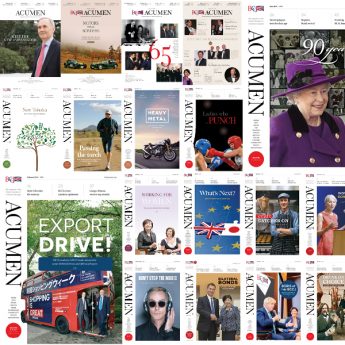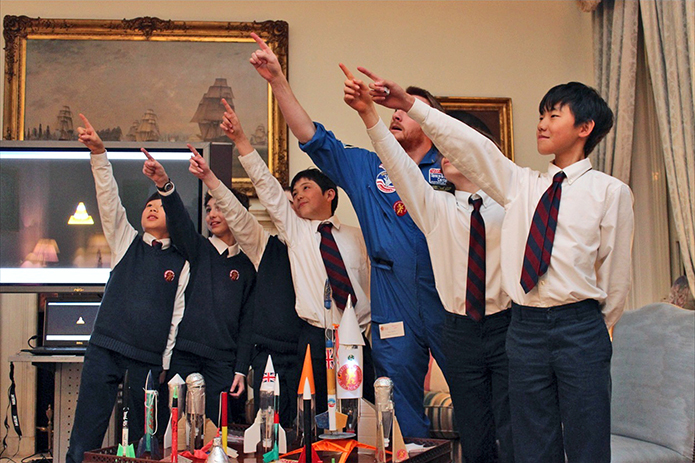Last year’s Japan400 celebrations attracted a huge wave of enthusiasm; the anniversary website notched nearly 130,000 hits and over 220 total events were held in Britain and Japan.
A prime aim of Japan400 was achieving historical resonance, in terms of both people and places, and making the events an opportunity for strengthening the UK–Japan partnership.
The visit to London and Gillingham by Hirado Mayor Naruhiko Kuroda in October 2012 kicked off Japan400, as Kuroda coordinated related events in his own city as well as others. Additional significant events were as follows.
On 10 January 2013, over 80 people came to the Japan400 launch at the Foreign Press Association in London.
Later that month, the bilingual production of Anjin opened to huge acclaim at the Sadler’s Wells Theatre, with a large embassy and business attendance.
On 5 February, many influential people attended the inauguration of the anniversary campaign at Skinners’ Hall, where the East India Company was founded. After a historical briefing by Professor Timon Screech, Japan 400 co-chairman, the Duke of Gloucester, royal patron of the Japan Society, delivered the keynote speech. The duke and Noriyuki Shikata, political minister at the Embassy of Japan in the UK, toasted Japan400 with sake sent from Hirado.
On 11 June, the day Captain John Saris’ ship the Clove first reached Japan in 1613, the “Voyage through Words and Music” concert was held at Fulham’s All Saints Church, where Saris lies buried. Ambassador of Japan to the UK Keiichi Hayashi spoke and the Marquess of Salisbury re-enacted the role of his ancestor, King James’ chief minister, in briefing the king about preparations for Saris’ mission. Evan Davis, of the BBC’s “Today” programme, also read excerpts from Saris’ journal.
The same day in Tokyo, British Ambassador to Japan Tim Hitchens CMG LVO hosted a reception and historical lecture at the embassy by Professor Screech.
On 8 September, a telescope was presented to the Japanese, on the 400th anniversary of the date on which Saris presented the shogun Tokugawa Ieyasu with a telescope from King James—the first ever to leave Europe. Thanks to sponsorship by Robin Maynard MBE, honorary member of the British Chamber of Commerce in Japan, it was viewed at Hatfield and then at the Tower of London, at a reception hosted by the chairman of the Royal Armouries, in front of the reciprocal gift of armour sent to King James by Shogun Ieyasu in 1613.
The same day in September also marked the start of Japan400 Week, including the major business seminar, “Japan & Britain in Partnership: meeting challenges of the 21st century”. Speakers included Akira Matsura, Hayashi Haruki of Mitsubishi Corporation International (Europe), Willie Walsh of International Airlines Group, Nagayama Osamu of Chugai Pharmaceutical Co. Ltd, Sir Stephen Gomersall of Hitachi Ltd and Arima Jun of JETRO London. This was followed by dinner at Guildhall at the invitation of Alderman Roger Gifford, the first Japanese-speaking Lord Mayor of London.
The week also included tea dedications by Akira Matsura of the Chinshinryu Association, in the church where William Adams was baptised, and at the Banqueting House, Whitehall, with the Duke of Gloucester and Lord Salisbury again present for a celebration of “Two Cultures United by Tea”. Images of King James looked down from the magnificent ceiling illustrated by baroque painter Sir Peter Paul Rubens. The duke welcomed the guests, many of them from the Japanese business community, in a speech that showed his interest in architecture and history as well as his affection for Japan.
On 9 September, Lord Salisbury hosted a Japan400 lunch at Hatfield House, built by his ancestor, with Japanese and British business leaders and Akira Matsura, whose ancestor first welcomed the British in Hirado.
The Japan Matsuri was celebrated with a Japan400 element in Trafalgar Square on 5 October.
On 26 November, the anniversary of the 1613 inauguration of the English Trading House in Hirado was commemorated with a memorial plaque. This was dedicated by the bishop of Stafford in St. Chad’s, Seighford, in memory of Richard Cocks, head of the Trading House, who was baptised in that church but died at sea on his return home in 1623.
Ongoing initiatives
In addition to this roster of events, Japan400 officials are undertaking a series of legacy projects, including some through schools and the creation or restoration of memorials.
On 6 December, when 400 years earlier the Clove was leaving Japanese waters to return home, Japan400 and the East India Company presented Tokugawa Tsunenari with a special gift at the Tower of London.
Tsunenari, the 18th head of his family since Shogun Ieyasu, received a commemorative coin approved by HM The Queen, showing King James, Tokugawa Ieyasu and the Clove on one side and the Queen’s head on the other.
Shizuoka Mayor Nobuhiro Tanabe looked on, having brought a large delegation to connect Japan400 with Shizuoka’s own project, Ieyasu400, which in 2015 and 2016 will mark the death of Ieyasu four centuries earlier.
There were also numerous events that took place in Japan during the celebratory year. The Japan400 initiative should lead to enhanced opportunities for cooperation in key business sectors, including tourism.
The Guildhall business seminar, for example, was open to everyone, and had high attendance by both British and Japanese participants. It was an important example of how firms in Britain and Japan are working together to achieve success in an uncertain world.
Finally, the monetary and in-kind support generously provided by many Japanese and British firms and individuals is a tribute to the strength of the bilateral relationship.





